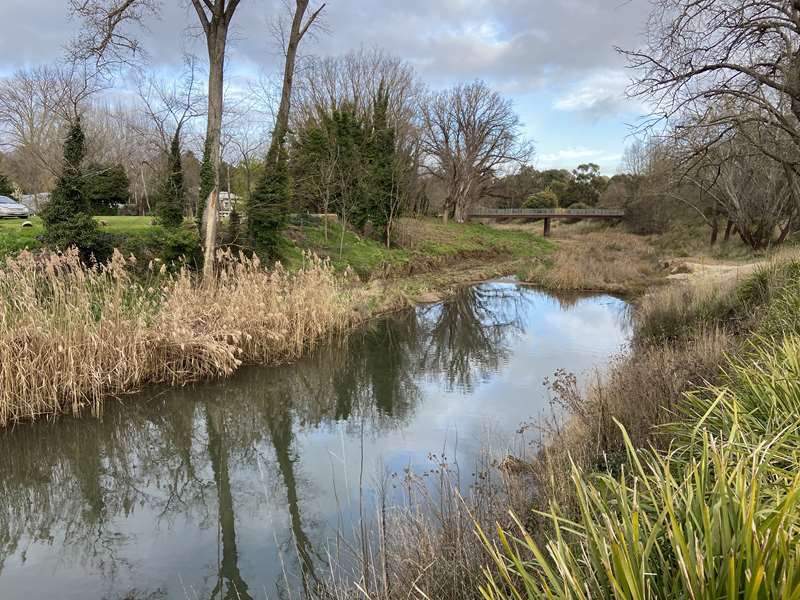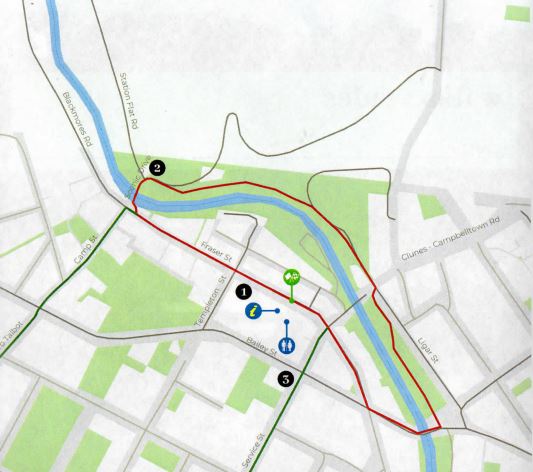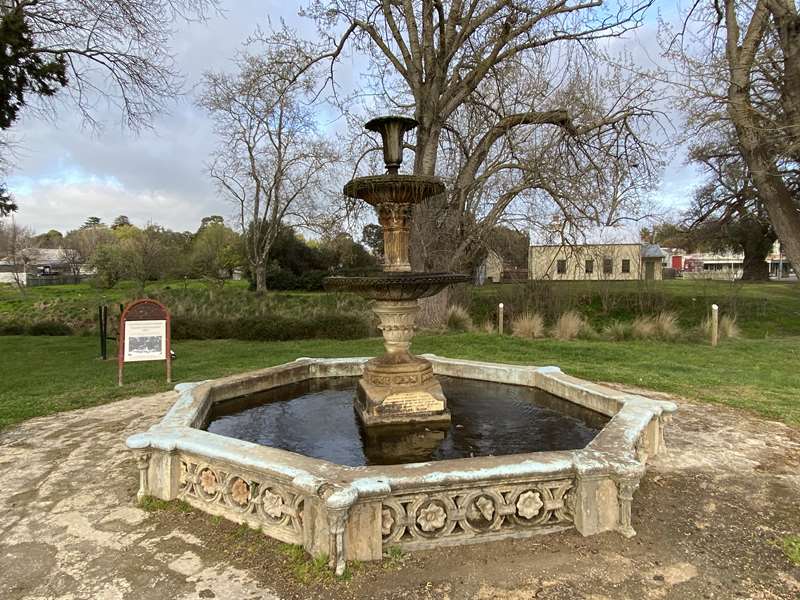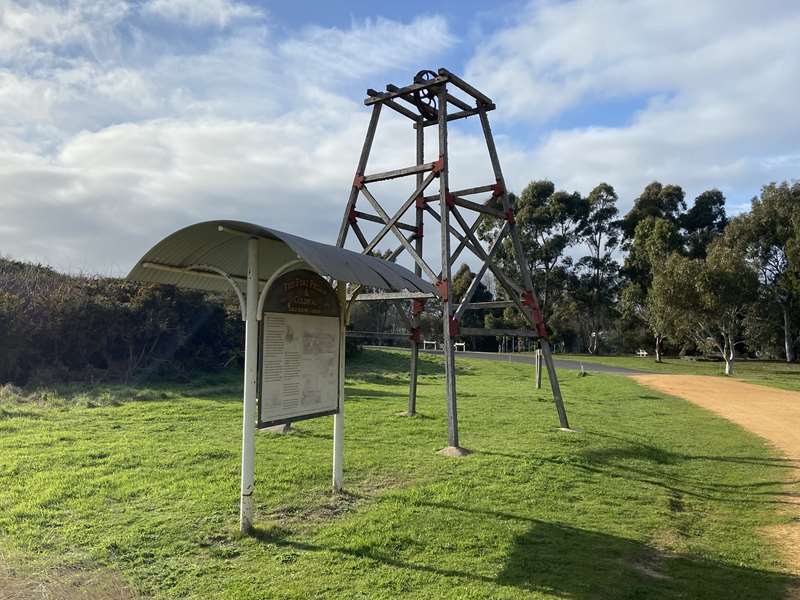Clunes Creek Walk


As one of the original and most intact gold towns in Australia, you'll feel like you're entering a bygone era when you explore Clunes. Take a walk or ride around the region and step back into the gold rush era, with streetscapes and countryside straight out of a colonial history book.
Starting from the Clunes Visitor Information Centre, this 2.1km trail takes you through the historic streetscape of Clunes which is lined with 19th century buildings. Follow the creek past Esmond Park and along the shady banks of the waterway. Spend some time visiting the shops on Fraser Street and visit the Museum at The Warehouse - Clunes to further immerse yourself in the history of this town.
Map of Walk Route

Points of interest shown on the map:
1. Discover the 19th century architecture including the former London Chartered Bank (1871) and Italianate Post Office (1878).

2. Esmond Park, located on the hillside overlooking the town centre. It contains a number of old gold mining sites including relics of the Port Phillip Mine which operated in the area from 1857 to 1901.
3. The Clunes Town Hall and Court House is a striking and eclectic municipal building design by Percy Oakden, and a rare rural example of a combined Court House and Town Hall.

Built in 1872-3 the distinctive Victorian free Classical style building reflects the civic pride of a gold town at the peak of its prosperity, with many original period features intact. The hall is regularly used to events, meetings and functions. Visit during the Booktown festival and enjoy an event in the spectacular hall.
Review:
A lovely walk with lots of historical elements.
The south end of the walk crosses Creswick Creek on Government Bridge. 'Government Bridge' is one of the earliest public works in Clunes and was the first substantial link between north and south Clunes. The bridge originally had a laminated wooden arch to carry the traffic. In 1896 this was replaced by steel lattice girders supporting the decking whilst retaining the basalt abutments of 1862. A new foundation stone was dedicated by the Mayoress Mrs. WT Pitcher on December 12th 1896.
Near the bridge is a Golden Way Heritage sign which reads "Clunes Gas Works - The Gas Works was established in 1862 by the Clunes Gas Company Limited with Capital of 2,000 pounds. Gas was supplied for street lighting, shops and businesses in Clunes Township from 1862 until the installation of electricity in 1938.
The trail heads northwards past the Clunes Bowling Club and a playground with tables and BBQ plus Queens Park, site of the Queens Park Fountain. It was erected by the burgesses of Clunes as a memorial of affection and loyalty on the completion of the fiftieth year of the reign of Her Majesty Queen Victoria.

Queens Park and Fountain were officially opened in 1887. A 19th Century reclamation project, combining 'pleasure garden', bowling green and 'pinetum', the park formed part of a network of early provincial botanic gardens. Plantings were influenced by Ferdinand von Mueller, Gournment Botanist.
The then passes the Clunes outdoor swimming pool and an oval where there are unshaded tables and toilets.
Further along there is historical signage about Clunes Goldfields Limited Hancock's Shaft. The shaft, just south of Scenic Road, was 16ft by 4.5 ft and 65 feet deep just five weeks after sinking commenced. The shaft had reached 200 feet by mid October 1913, when work stopped pending the installation of steam-powered machinery to enable sinking. This was not installed at the time due to the outbreak of World War I in 1914. With the resulting shortages of labour and capital the project closed down. Re-opened in 1931 the shaft was deepened to 540 feet. The absence of any significant gold values resulted in the mine being abandoned in 1932.
You then pass a pedestrian bridge and there are some stairs going up the hillside behind which was a popular area from which to photograph Fraser Street in the past.
Another historical sign has a photo of a Horse Whim working on the Port Phillip and Colonial Gold Mining Company's site, c1880. The Horse Whim was used to wind a rope which lowered and raised equipment used for mining in the shaft It was also used to bring the gold bearing quartz to the surface.
After passing an outdoor gym and some tables, you will come to the Port Phillip Mine (1857 - 1901). There is an excellent information board next to a simple frame of a poppet head.

After crossing the creek the walk takes you past historic buildings in town.
In the garden next to the Club Hotel are some wonderful sculptures.
Photos:
Location
36 Fraser Street, Clunes 3370 View Map








